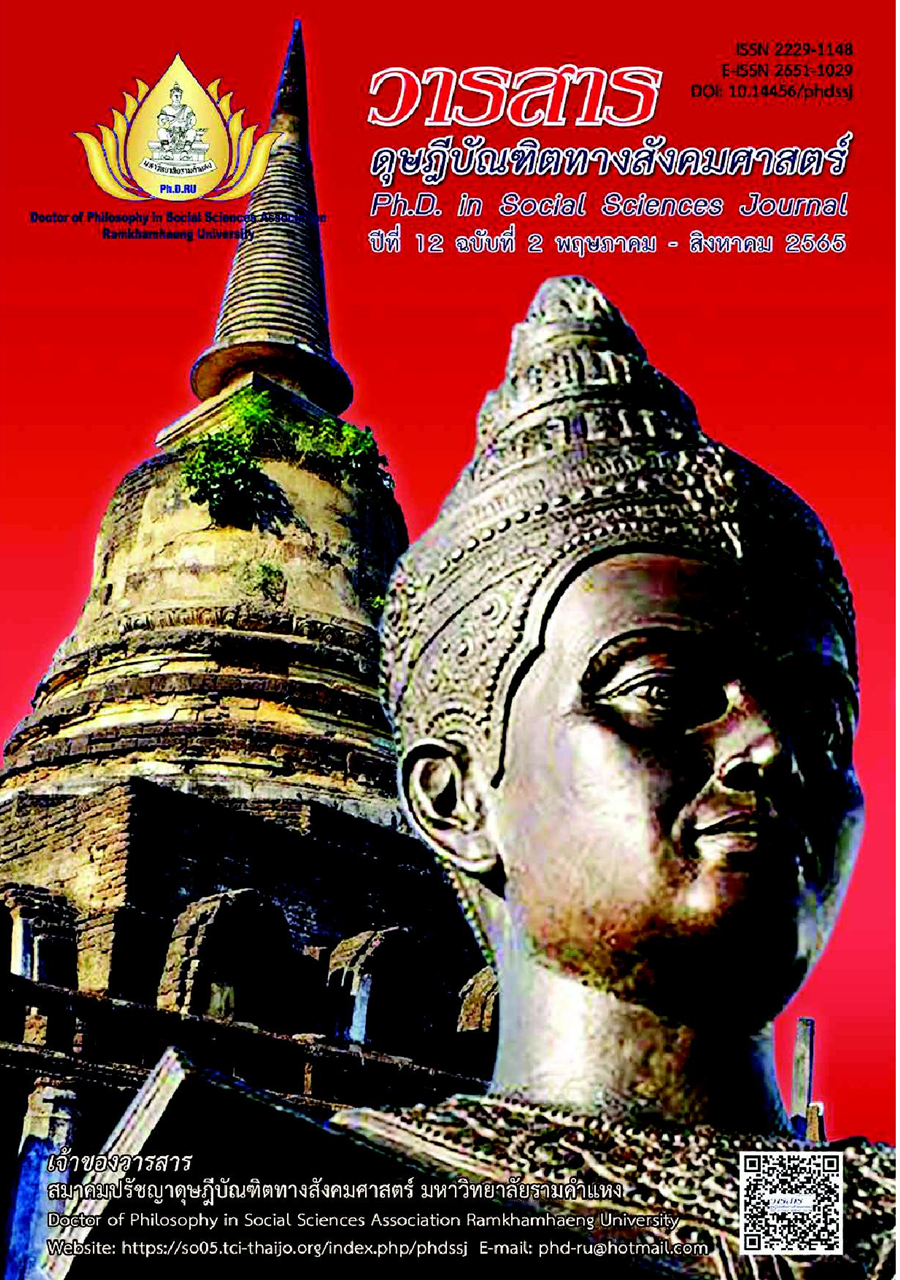Creative Innovation Management to Excellence in Innovation and Organizational Performance Education Context: Private Hospital Business in Thailand
Main Article Content
Abstract
This research article aims to study the meaning and components of creative innovation management of private hospitals to excellence in innovation and the performance of organizations. By using phenomenological methods in pursuit of knowledge of the truth by studying the phenomenon and life experience of those who experience that situation directly with in-depth interviews and non-invasive observation with private hospital administrators in Thailand that have been certified for international quality standards for the treatment of 6 locations. By interviewing 1 executive each.
The results show that: creative innovation management is the organization’s overall management capability. In creating and changing the concepts of creating new things for innovation in which elements of creative innovation management are important. Consists of Proactive change, Learning continuously, Creative connection, and Technology integration.
Article Details

This work is licensed under a Creative Commons Attribution-NonCommercial-NoDerivatives 4.0 International License.
Academic articles, research articles, and book reviews in the Ph.D. in Social Sciences Journal are author’s opinions, and not the publisher’s, and is not the responsibility of the Ph.D. in Social Sciences Journal Philosophy Association, Ramkhamhaeng University. (In the case that research is done on human, the researcher has to be trained in Ethics for Doing Research on Human Training and has to produce the evidence of the training).
References
Baldwin, J. R., & Johnson, J. (1996). Business strategies in more and less-innovative firms in Canada. Research Policy, 25(5), 785-804.
Bangkok Bank. (2022). “Thailand” opens the country to promote tourism entrepreneurs should push wellness tourism, a popular trend that won the hearts of travelers. Retrieved from https://www.bangkokbanksme.com/en/7sme1-hot-trend-wellness-tourism [In Thai]
Bovornkiratekajorn, C. (2011). Private hospitals business model for innovation management toward excellent health care center of Asia. Master Thesis of Science (Innovation and Technology Management), Thammasat University. [In Thai]
Buaraphan, K. (2013). Qualitative research: Not difficult as thought (5th ed.). Mahidol University, Institute for Learning Innovation. [In Thai]
Chantavanich, S. (2013). Qualitative research methods (21st ed.). Chulalongkorn University Press. [In Thai]
Creswell, J. W. (2007). Qualitative inquiry and research design: Choosing among five approaches (2nd ed.). Sage.
Dooley, L., & O’Sullivan, D. (2003). Developing a software infrastructure to support systemic innovation through effective management. Technovation, 23(8), 689-704.
Drucker, P. F. (1954). The practice of management. Harper & Row.
Dwyer, L., & Mellor, R. (1993). Product innovation strategies and performance of Australian firms. Australian Journal of Management, 18(2), 159-180.
Fidel, P., Schlesinger, W., & Cervera, A. (2015). Collaborating to innovate: Effects on customer knowledge management and performance. Journal of Business Research, 68(7), 1426-1428.
Goldman, S. L., Nagel, R. N., & Preiss, K. (1995). Agile competitors and virtual organizations: Strategies for enriching the customer. Van Nostrand Reinhold.
Kaplan, R. S., & Norton, D. P. (2004). Measuring the strategic readiness of intangible assets. Harvard Business Review, 82(2), 52-63.
Kirkbride, G. L. (2014). Exploring how nurses make sense of the safety features of smart infusion pump technology. Doctoral Thesis of Philosophy (Nursing), University of Iowa.
National Statistical Office. (2017). The 2017 private hospital survey. Retrieved from http://www.nso.go.th/sites/2014/DocLib13/ด้านสังคม/สาขาสุขภาพ/โรงพยาบาลและสถานพยาบาลเอกชน/2560/FullReport.pdf [In Thai]
Patton, M. Q. (1990). Qualitative evaluation and research methods (2nd ed.). Sage.
Podhisita, C. (2011). Science and art of quality research (5th ed.). Amarin Printing & Publishing. [In Thai]
Porter, M. E. (1980). Competitive strategy: Techniques for analyzing industries and competitors. The Free Press.
Shipley, D., Edgett, S., & Forbes, G. (1991). New product success rates among British and Japanese companies. EMAC 1991 Proceedings (pp. 1160-1175). Rome.
Storey, C., & Easingwood, C. J. (1999). Types of new product performance: Evidence from the consumer financial services sector. Journal of Business Research, 46(2), 193-203.
Tantivivathanaphand, S. (2012). Influences of technological and behavioral resources on the product and process innovation performance of organizations in Thailand. Doctoral Dissertation of Business Administration, Ramkhamhaeng University. [In Thai]
Weerawardena, J. (2003). The role of marketing capability in innovation-based competitive strategy. Journal of Strategic Marketing, 11(1), 15-35.
Wong, S.-Y., & Chin, K.-S. (2007). Organizational innovation management : An organization-wide perspective. Industrial Management and Data Systems, 107(9), 1290-1315.
Woodman, R. W., Sawyer, J. E., & Griffin, R. W. (1993). Toward a theory of organizational creativity. The Academy of Management Review, 18(2), 293-321.
Wright, P. M., McMahan, G. C., & McWilliams, A. (1994). Human resources and sustained competitive advantage: A resource-based perspective. The International Journal of Human Resource Management, 5(2), 301-326.


